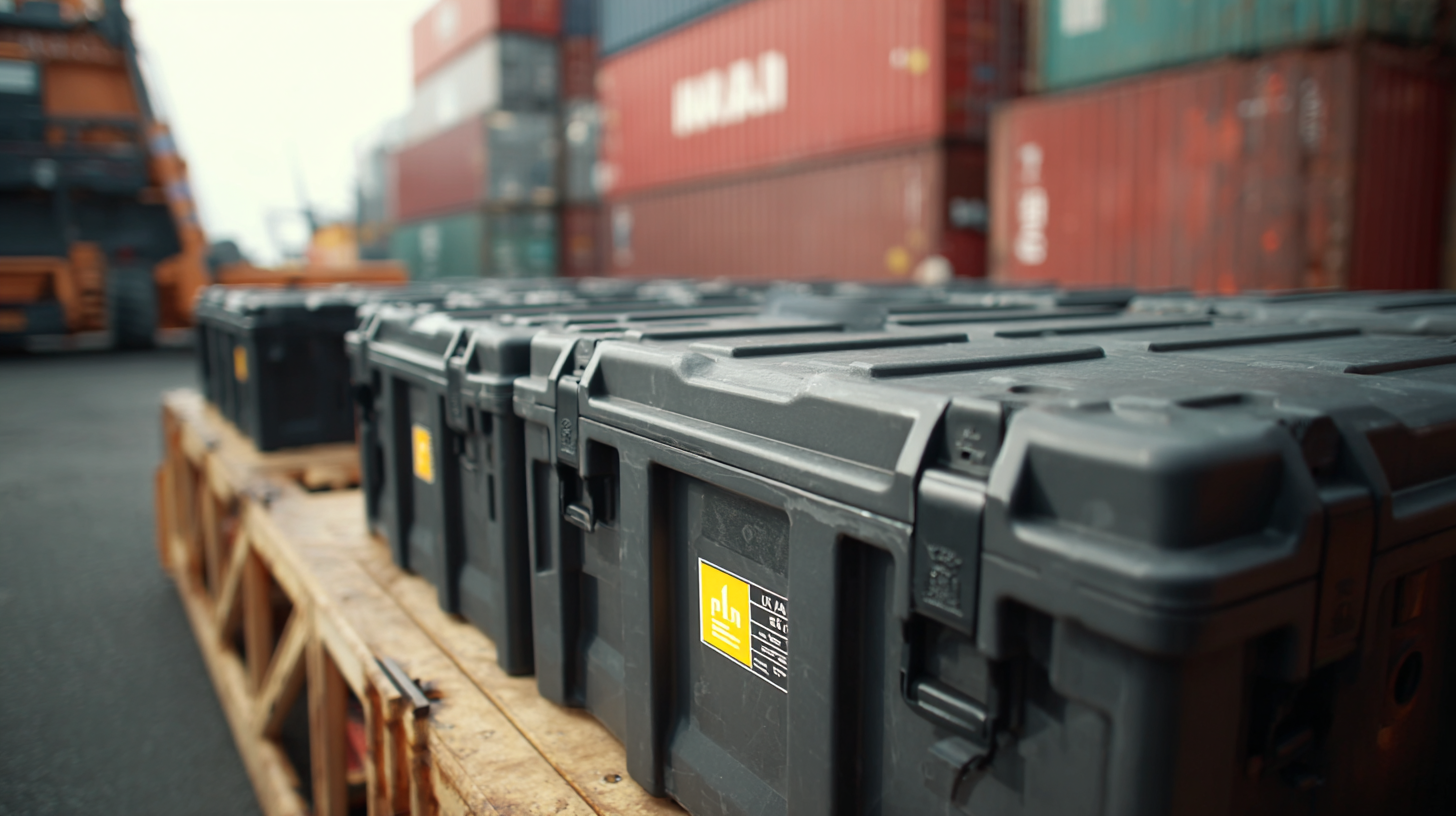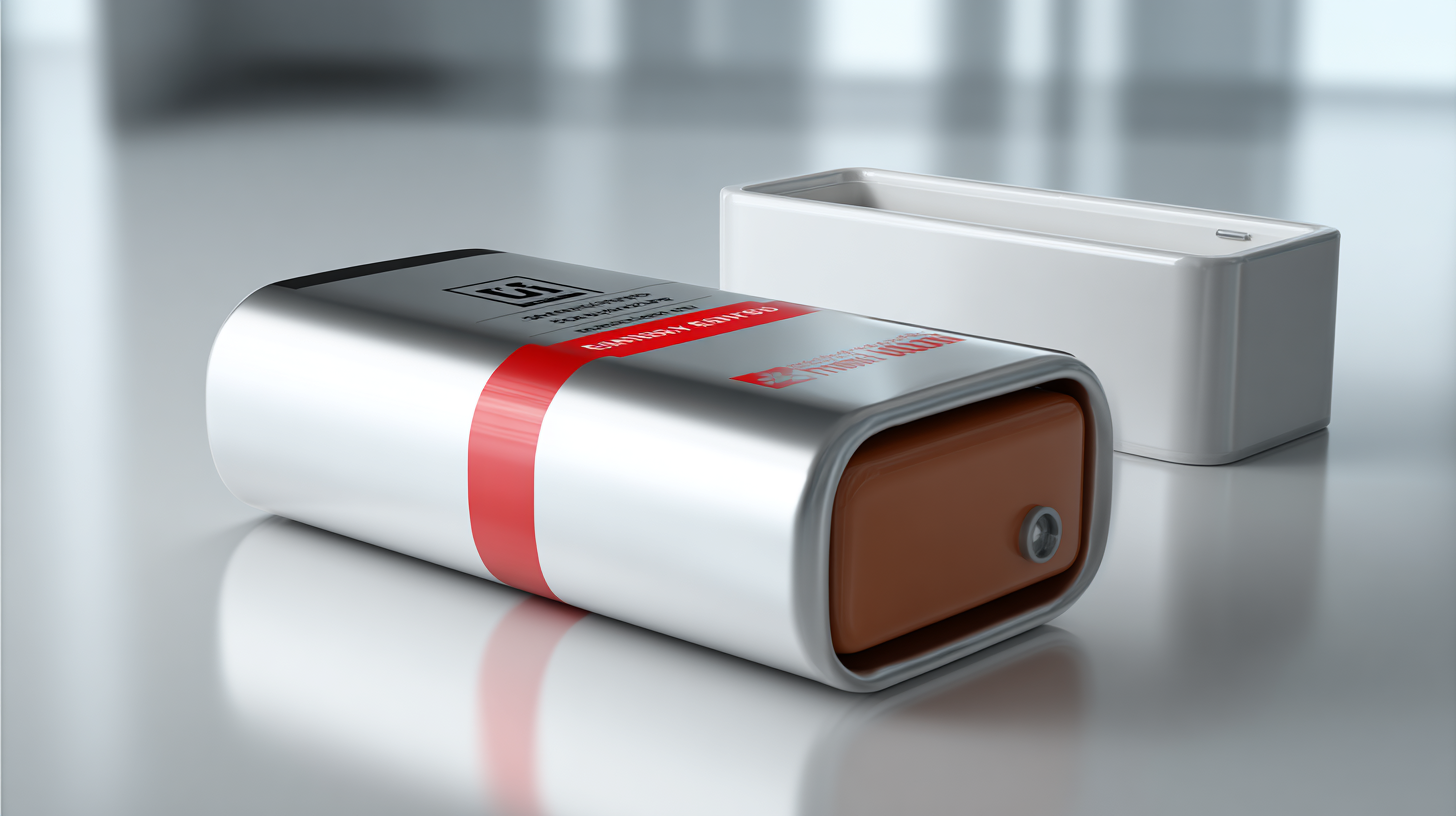Exploring the Safety Standards and Handling Guidelines for UN3481 Batteries
The increasing reliance on portable electronic devices has led to a significant rise in the use of
UN3481 batteries, which are lithium-ion cells contained within equipment.
According to the International Air Transport Association (IATA), in 2020 alone,
approximately 40% of all air cargo included lithium batteries,
highlighting the importance of stringent safety standards and handling guidelines.
The risks associated with improper handling and storage of UN3481 batteries can lead to hazardous incidents,
including fire and chemical leaks. Therefore, organizations must adhere to established protocols and leverage data from
the Battery Safety Standard (UL 2054) and the
UN Manual of Tests and Criteria to ensure safe transportation and use.
This article aims to explore the essential safety standards and handling guidelines for UN3481 batteries,
equipping users with the necessary knowledge to mitigate risks effectively.
Understanding UN3481 Battery Classifications and Regulations
The UN3481 classification pertains to lithium batteries contained in or packed with equipment, highlighting the importance of proper handling and regulatory compliance. These batteries are considered dangerous goods due to their potential hazards, including fire and chemical risks. Regulations dictate specific packaging, labeling, and transportation methods to ensure safety during transit. Understanding these standards is crucial for manufacturers, transporters, and consumers to mitigate risks and ensure safe handling.
Tips: Always verify the latest regulations from the International Air Transport Association (IATA) or the Department of Transportation (DOT) before shipping UN3481 batteries. Proper packaging should include robust outer boxes, appropriate labeling, and cushioning materials to prevent damage. Additionally, ensure that you have the necessary documentation ready, such as the declaration of Dangerous Goods, to avoid compliance issues.
Being well-acquainted with the handling guidelines for UN3481 batteries not only ensures safety but also facilitates smoother transactions. Training employees on the proper methods to handle and transport these batteries can significantly reduce the risk of incidents. Regular audits and reviews of handling processes are also recommended to maintain adherence to the evolving safety regulations.

Key Safety Standards for Transportation of UN3481 Batteries
When transporting UN3481 batteries, adherence to specific safety standards is crucial to ensure public safety and prevent hazardous incidents. UN3481 refers to lithium-ion batteries contained in or packed with equipment, and their safe transport is regulated under the International Air Transport Association (IATA) guidelines and the United Nations Recommendations on the Transport of Dangerous Goods. According to the IATA, these batteries must be packaged in a way that prevents short circuits and physical damage. This includes utilizing non-conductive materials and ensuring adequate cushioning within the packaging.
Moreover, it is vital to label UN3481 shipments appropriately to convey the risks associated with lithium batteries. Labels must include the UN2481 symbol, indicating they contain lithium batteries and the potential risks of fire or explosion if handled improperly. The latest reports from the Dangerous Goods Advisory Council highlight that improper handling of lithium-ion batteries during transport has led to over 250 incidents in the past five years, emphasizing the need for stringent adherence to guidelines. The use of tested and certified packaging, as outlined in industry standards such as the UN standard 3481, plays a critical role in mitigating these risks during transit.
Exploring the Safety Standards and Handling Guidelines for UN3481 Batteries
| Safety Standard |
Description |
Handling Guidelines |
Emergency Procedures |
| UN 3481 |
Lithium ion batteries transported at a state of charge not exceeding 30%. |
Ensure packaging is certified for lithium batteries. Use non-conductive materials. |
In case of fire, use a Class D fire extinguisher. Evacuate area and isolate the package. |
| IATA DGR |
International Air Transport Association Dangerous Goods Regulations. |
Follow declaration and labeling requirements for lithium batteries. |
For leaks, contain and absorb with appropriate materials. Dispose of as hazardous waste. |
| DOT HM-224 |
U.S. Department of Transportation regulations for hazardous materials. |
Label packages with the appropriate markings. Keep away from flammable materials. |
Call emergency services and provide them with the UN number. |
| ISO 9001 |
Quality management systems standard applicable to battery manufacturers. |
Maintain quality control throughout production and packaging processes. |
Regular audits and checks to prevent defects and hazardous situations. |
Essential Handling Guidelines for UN3481 Battery Packaging
When it comes to handling and packaging UN3481 batteries, which consist of lithium-ion batteries contained in or packed with equipment, adhering to stringent safety guidelines is crucial. According to the International Air Transport Association (IATA), improper packaging of these batteries can lead to hazardous incidents during transport, underlining the need for compliance with established safety norms. For instance, each UN3481 package must incorporate appropriate outer packing that can withstand external pressures and remain secure throughout the shipping process, as outlined in the UN Model Regulations.
Professionals in the field must be well-versed in the essential handling guidelines for UN3481 battery packaging. The United Nations Economic Commission for Europe (UNECE) emphasizes the importance of clear labeling and documentation, including proper handling instructions and emergency response information. Reports indicate that 75% of battery incidents are attributable to packaging failures; thus, implementing recommended practices such as using non-conductive materials and ensuring that terminals are insulated helps mitigate risks significantly. By adhering to these guidelines, stakeholders can minimize hazards associated with transportation and storage, thereby ensuring greater safety in the logistics chain.
Emergency Response Procedures for UN3481 Battery Incidents
When dealing with UN3481 batteries, which are lithium-ion batteries transported in equipment or contained in packaging, it's crucial to have a clear understanding of emergency response procedures for any incidents that may arise. If a UN3481 battery incident occurs, the first step is to ensure the safety of all personnel in the vicinity. Quickly evacuate the area and call emergency services if there is smoke, fire, or any signs of leaking material.
Tips for responding to UN3481 battery incidents include keeping a fire extinguisher rated for lithium fires nearby, as water may not be effective for lithium battery fires. Additionally, ensure that all staff are trained in recognizing signs of overheating or damage, and that they know how to report incidents promptly.
In case of a spill or leak, avoid direct contact with the material and use appropriate personal protective equipment (PPE). Contain the area and apply specialized kits for hazardous materials if available, ensuring that you follow local and national guidelines for dealing with hazardous waste. This proactive approach helps mitigate risks and ensures a safer environment during emergencies involving UN3481 batteries.

Best Practices for Storing and Disposing of UN3481 Batteries
When dealing with UN3481 batteries, which typically include lithium-ion cells contained in equipment or packed with equipment, establishing best practices for storage and disposal is crucial. These batteries can pose safety risks if not managed properly. According to the International Air Transport Association (IATA), approximately 75% of air cargo incidents involve lithium batteries, highlighting the importance of adhering to safety standards like those outlined in the UN Model Regulations.
For storage, keeping UN3481 batteries in a cool, dry place away from flammable materials is essential. The National Fire Protection Association (NFPA) recommends that batteries be stored in fire-resistant containers. Additionally, it is vital to ensure that batteries are fully charged and covered to prevent short-circuits, which can lead to thermal runaway incidents. According to a report by the Battery Safety and Performance Consortium, improper storage and handling lead to over 90% of battery-related accidents.
Disposal of UN3481 batteries demands adherence to local regulations, which often stipulate recycling as the primary method. The Battery and Electric Vehicle Recycling Program indicates that lithium batteries should be taken to designated recycling centers, where they can be safely processed to recover valuable materials and reduce environmental impact. Proper training for employees on handling and disposing of these batteries can further mitigate risks, as outlined in the Environmental Protection Agency (EPA) guidelines for hazardous waste management.












